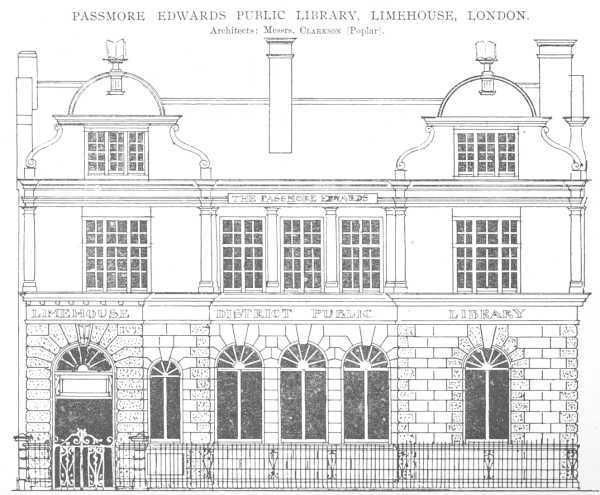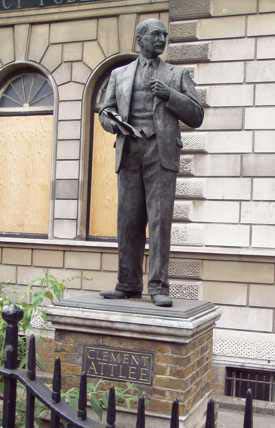Passmore Edwards initally offered £6000 towards the costs of the Limehouse Library but then withdrew the offer, stating “I cannot promise to substantially assist you whilst this wretched war with the Transvaal Republic is waged”. He later contributed £5000.

History
A poll, to adopt the Free Library Acts resulted in a 2,000 majority in favour and a board of Library Commissioners were elected to find both a site and the capital required to build it. In January 1900 the Commissioners wrote to both Passmore Edwards and Canon Barnett for assistance. Edwards initially offered to give £6,000 but within days had written to withdraw the offer, saying that he could not promise to substantially assist ‘whilst this wretched war with the Transvaal Republic is waged’. Within weeks he had changed his mind and agreed to pay £5,000 towards the building and laid the foundation stone, at 2.30pm on 19 October 1900.
Edwards declined to give a lengthy speech after laying the stone. The first reason he gave was that after leaving Limehouse he was due to lay the foundation stone of the Bow Library and at 8pm that evening he was due to unveil the memorials to Charles Keene and Leigh Hunt at the Shepherds Bush Library.
The second reason, he said, was that ‘it was difficult to make bricks without straw’- he could not make a speech without facts to speak upon. He had walked the two miles from Whitechapel to Limehouse that afternoon and said he had been struck by the absence of anything of any architectural character to relieve the monotony. But he had noticed the number of men standing about the streets with nothing to do. The library would be for these men, where they could find recreation different to lounging about.
Designed and built in Commercial Road, by Sabey & Son of Islington, the library was opened a year later by the first Mayor of Stepney, Edward Mann. Edwards was unable to attend the ceremony.
The library was originally fitted with gas lighting but, so as not to later spoil the internal decoration, the wiring for electric lighting was also installed for when it became available. In the Library’s entrance the Brockwell Collection, an exhibition of species of fish caught in the nearby River Lee between 1876-1881, was put on display.
The library closed for three years in 1928, to allow an extension at the rear to include a Children’s Library and Reading Room, both claimed to be the largest in East London, as well as a Lecture Hall with seating for 256 people. After the formation of the Borough of Tower Hamlets this lecture hall was also used for weekly feature films, with free entry.
In 1987 the Wapping Neighbourhood Committee commissioned local artist Claire Smith to design and execute a mural for the library. Painted in the style of William Blake the mural is called Limehouse Reach, a huge fresco stretching right across the rear wall of the library.

The following year a statue of Clement Attlee, MP for Limehouse from 1922 to 1950 and Prime Minister between 1945 and 1951, was erected outside the library and unveiled by Harold Wilson.


Although talk of closing the library in 1997 initially came to nothing the library’s days were numbered and it eventually closed in June 2004. The library building remained empty in a state of disrepair for many years, resulting in Historic England including the Grade II listed building to be included on the Buildings at Risk Register. Finally the library was restored and reopened as a splendid boutique hotel, the Limehouse Library Hotel. https://limehousehotel.com/our-story/
The Attlee statue had been removed some years earlier.